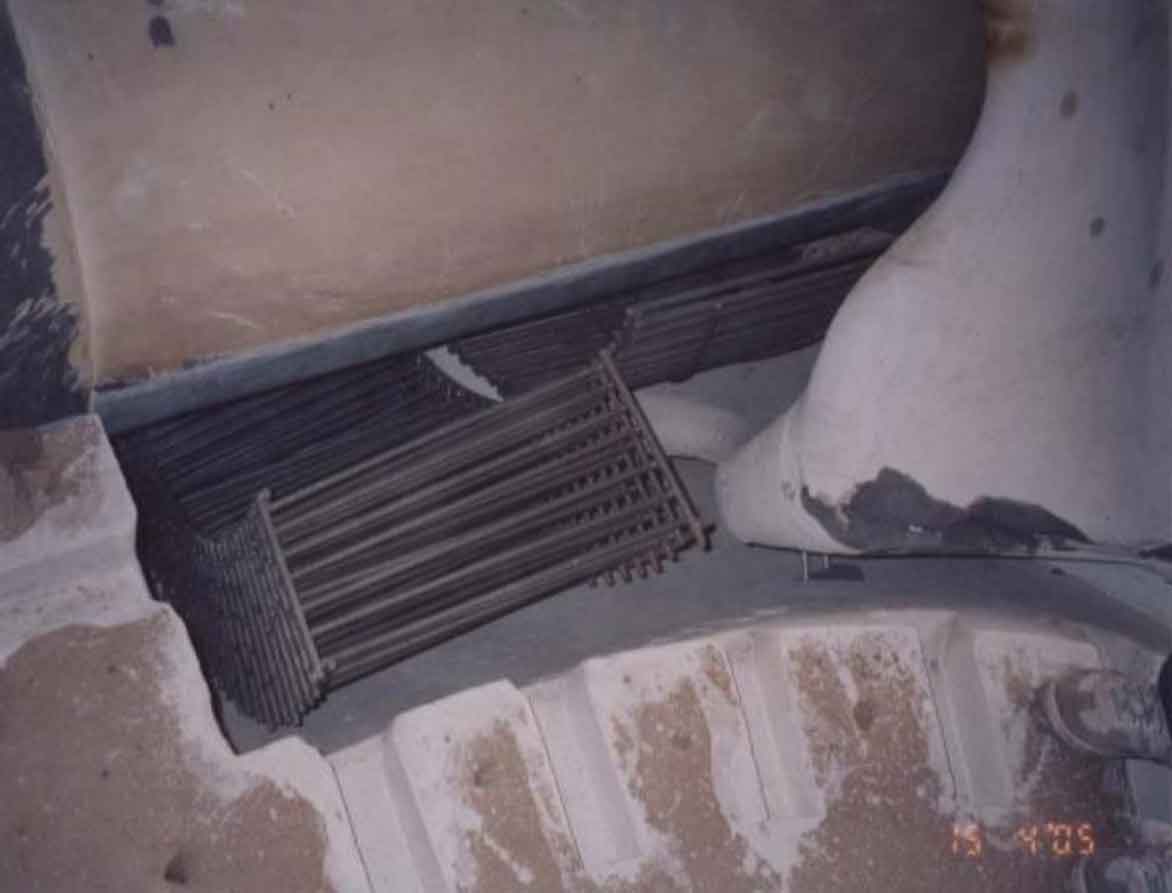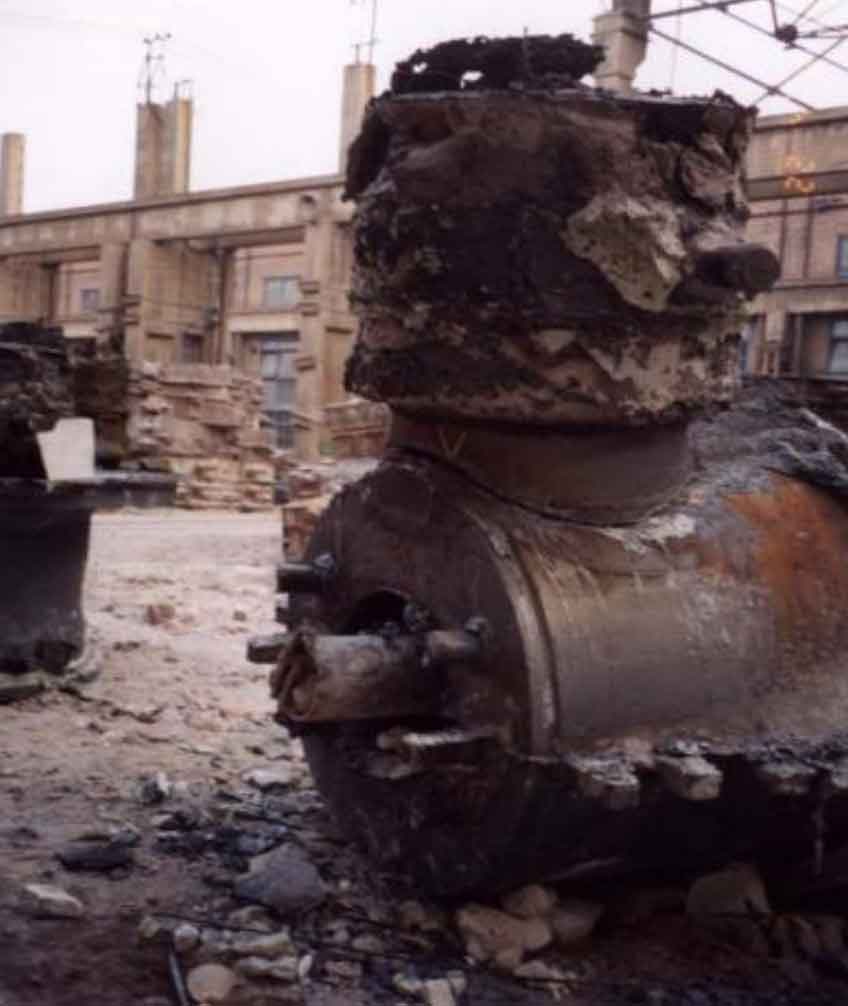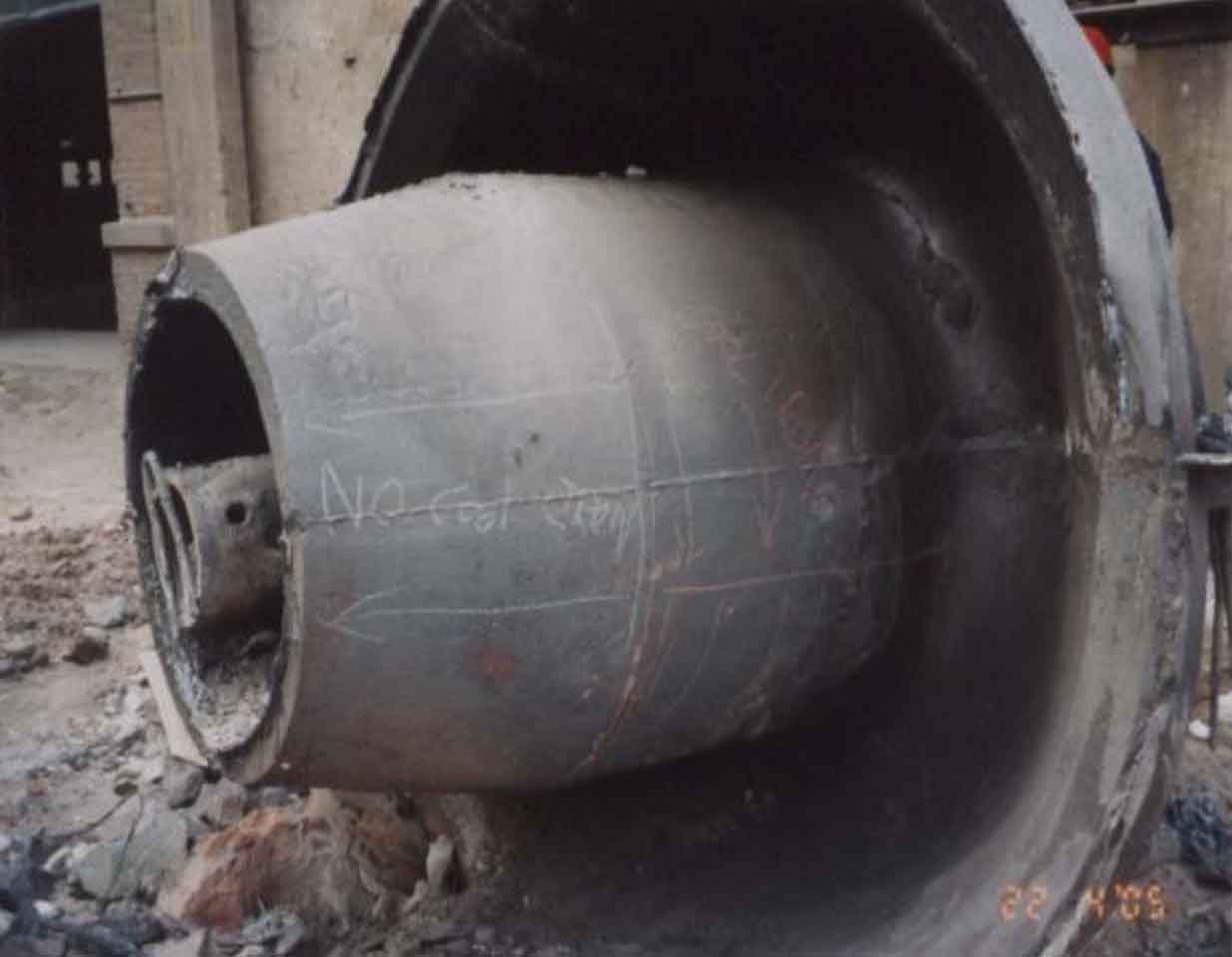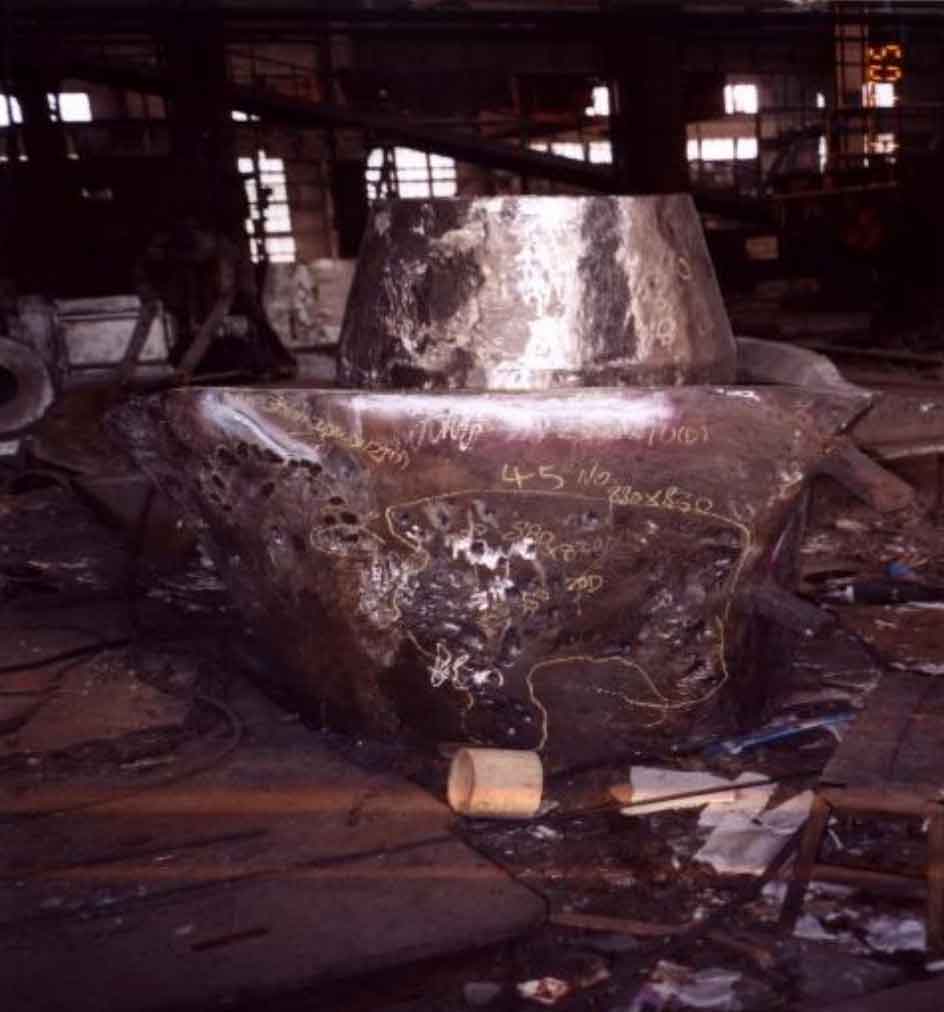According to the thinking method of formulating the inspection standard of JCSS hull steel castings in Japan, medium and large steel castings are dominated by bending stress, and the parts with high stress are on the outer surface and near surface, rather than in the middle of the material thickness. Therefore, in addition to the materials of hull steel castings meeting the specification requirements, special attention should be paid to the casting defects on the surface and near the surface.
The common casting defects of medium and large steel castings are: crack, air hole, sand inclusion, inclusion, shrinkage cavity, looseness, incomplete fusion of internal cooling iron, incomplete fusion of mud core support, etc. The above pictures reflect the common casting defects.
Before the inspection of important castings, be familiar with the casting process of the inspected products, review the melting and pouring records, heat treatment records, casting defect repair records (if any) and other important process documents and process control records affecting the quality of steel castings, and understand the control situation in the production process of the inspected products. Be familiar with the casting process of the inspected products and pay attention to the parts prone to casting defects of the inspected products. The following figure shows the casting process of stern column steel castings (single piece weight > 7T) of a factory:
The irrationality of this casting process is that the selection of pouring position is not the best scheme (it may be that the production site is limited). The steel casting is poured horizontally in the axial direction, the big end of which is placed with semi-annular internal cooling iron, and five internal gates are concentrated on the upper part of the big end internal cooling iron. The size and surface treatment process of internal cooling iron are very strict. If the production process is not controlled properly, serious casting defects will occur in steel castings.
The key parts of the process plan: the upper surface of the small end, the root of the pouring riser and the upper surface of the large cone. This is because the negative effects brought by the internal cooling iron during the pouring process (the oxide skin on the surface of the internal cooling iron is easy to produce gas and oxide slag after contacting the molten steel) move to the above parts with the flow direction of the molten steel. If the pouring temperature is too low to ensure the melting of the internal cooling iron, the above casting defects can also occur in the lower part of the steel casting, or even cracks. Special attention should be paid during the inspection. Facts have proved that there are large-area dense pores and slag inclusions on the above parts of the steel casting after grinding (as shown in the figure), which are difficult to remove. Finally, the steel casting failed to pass the inspection of a surveyor of a classification society.
The best casting process scheme of the steel casting should be vertical with the large end face upward, cancel the internal cooling iron, the riser is located at the large end face, and the bottom pouring internal gate. This is not only conducive to the feeding of molten steel, but also conducive to the removal of gas impurities floating to the riser, so as to ensure the casting quality of products.




